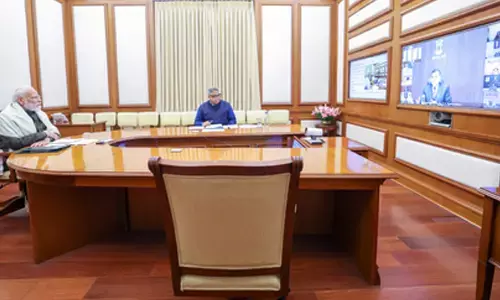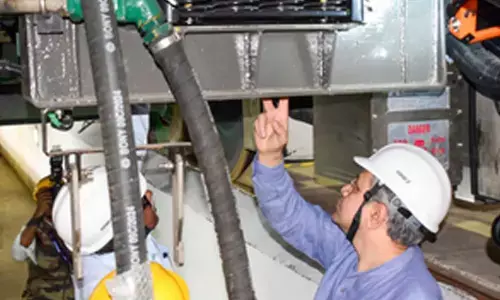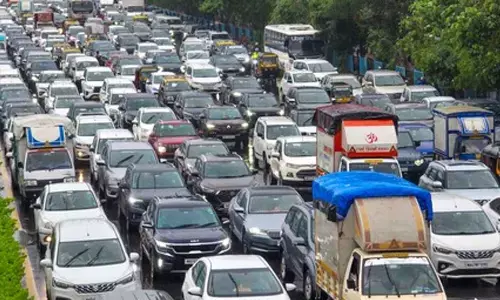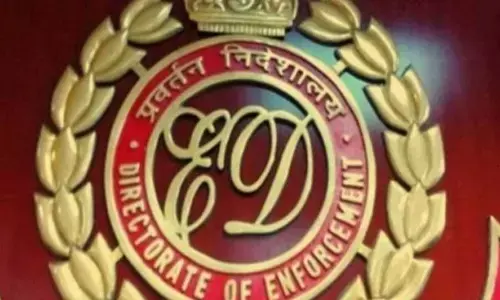Reinvent economic growth model

Future actions must accept the reality of climate equity and use it to drive economic growth
Climate change is an existential threat, we know that. But what we continue to deny is the need for drastic emission reduction, that too in a world where millions still need the right to development.
In India, the poor, already surviving on the margins, are severely impacted by extreme weather events. They are the first victims of climate change — and remember, always, that they have not contributed to the stock of greenhouse gases in the atmosphere.
So, as we move ahead, we must recognise the imperative of climate justice. The reasons are inconvenient but simple. Carbon dioxide (CO2) has a long residence time in the atmosphere and so, what is emitted in the past has accumulated and will "force" temperatures to rise.
Then, CO2 is linked to the way the world runs the economy — fossil fuels (coal or gas) are still determinants of growth. Most importantly, millions of people are still waiting to get the benefits of economic progress — which means access to affordable energy. And, this at a time when the world has literally run out of carbon space to accommodate their need for development.
So, what will this part of the emerging world do? Their growth — use of fossil fuels — will add to the jeopardy that awaits us. How can this "growth" be reinvented so that it is low-carbon, sustainable and yet affordable? It is not enough to berate and bully the emerging world countries into action.
For far too long, the world has worked overtime to erase or dilute climate equity in the negotiations. The much-lauded 2015 Paris Agreement got rid of the very concept of historical emissions; it consigned climate justice to a postscript.
It even removed the idea of "compensation" for the loss and damage suffered because of climate change. Worse, it created a weak and meaningless framework of climate action that would depend on what a country could do; not what it was expected to do based on its contribution to the stock of emissions or fair share.
It should not surprise us then that the sum of the nationally determined contributions (NDC) — UN jargon for national reduction targets — takes the world towards a minimum of 3°C temperature rise or more.
The world should no longer dilly-dally around with empty promises of net-zero targets for 2050. It must discuss how countries will front-load emission reductions for 2030.
The "old" industrialised countries and new entrant China have appropriated 73 per cent of the carbon space till 2019, and, even with the reduction targets announced, will occupy 70 per cent by 2030. This is why future actions must accept the reality of climate equity and use it to drive economic growth.
If we do this, then the opportunity of real change opens up — if we invest today in the poorest economies they can grow without pollution. For instance, the energy needs of the poorest in the world. Millions of women still use biomass to cook, which adds to their health burden as these stoves are extremely polluting. The way ahead would be to use clean renewables to meet the needs of these households, which are still outside the fossil fuel energy system. But the cost of renewable energy is beyond their affordability. So the world must not preach the need for energy transitions but pay for these to happen — today.
This is where the discussions on markets — Article 6 of the Paris Agreement — should be put to work. The current effort is to find smart and cheap ways to build a market instrument that will reduce the cost of carbon purchase from the developing world.
A repeat of the complicated, convoluted and cheap Clean Development Mechanism (CDM) must not be allowed. Instead, market instruments should be used for transformational action so that projects that will bring "big bang" carbon reductions can be paid for through this instrument.
For instance, the provision of clean energy through millions of mini-grids in the world of the poorest. In this way, the market will be by public policy and intent, and not left to discover new scams in the name of carbon offsets.
This is also where discussions on nature-based solutions must be firmly rooted. We must not miss the wood for the trees — literally in this case. There is an opportunity to use the ecological wealth of poor countries and communities for mitigation as trees and natural ecosystems sequester CO2.
So, trees should not be viewed as carbon sticks but as opportunities for livelihoods and economic well-being of the poor. The rules for carbon offsets for forests must be developed with this in mind — deliberately and with statecraft.
The fact is, we have lost precious time in finding "smart" ways to do as little as possible to reduce greenhouse gas emissions and it is time this stopped.
We need to drive policies knowing that we live in an interdependent world, where cooperation is critical, and that ensuring this requires fairness and justice. Climate change is our biggest challenge yet as a human race and it is time we stood up to it.
(Writer is Director General of CSE and editor of Down To Earth, an environmentalist who pushes for changes in policies, practices and mindsets)















